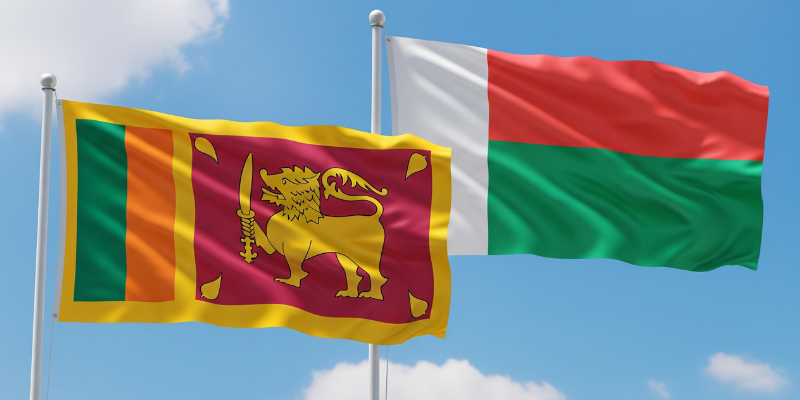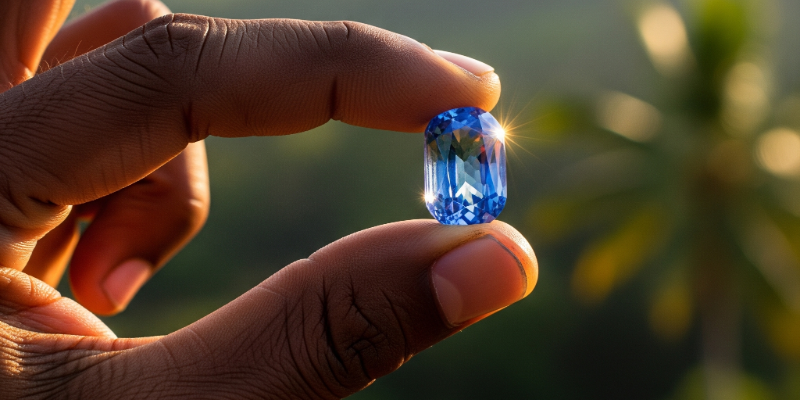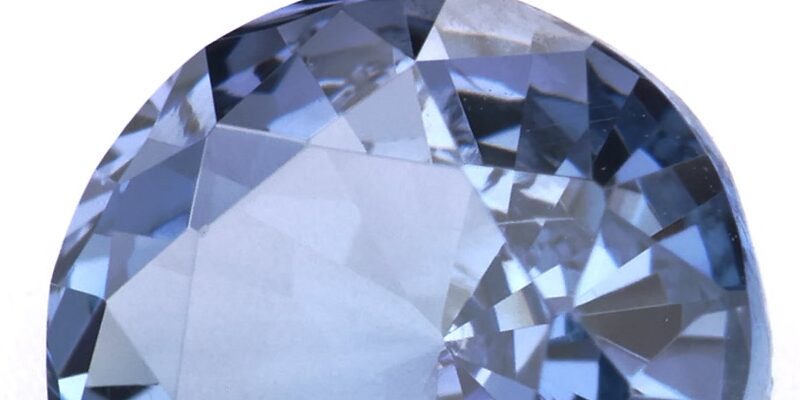Sapphire Knowledge
Ceylon vs Madagascar Sapphire: What’s the Difference?
Ceylon vs Madagascar Sapphire: What’s the Difference?
When customers ask me about Ceylon vs Madagascar sapphire differences, I usually start by pulling out actual stones from both origins. Nothing beats seeing them side by side.
I’ve been trading sapphires for years now, and honestly? The rivalry between these two sources is more about marketing than most people realize. Both produce beautiful stones, but there are practical differences buyers should know about.
Color – The First Thing You Notice
Ceylon sapphires have this particular blue that’s hard to describe until you see it. It’s lighter, more electric – almost like looking at a clear tropical sky. My customers often say there’s something “alive” about Ceylon blues. They shift and change as you move them around.
Madagascar blues tend to run deeper. Richer, you could say. Sometimes so saturated they look almost navy in dim light. I’ve had buyers reject perfectly good Madagascar stones because they seemed “too dark” indoors, then fall in love with the same stone under daylight.
Here’s something I learned the hard way: always check sapphires under different lighting. Fluorescent office lights can make Madagascar stones look flat, while Ceylon sapphires seem to glow even under terrible lighting.
The Name Game
Let me be straight with you – the “Ceylon” label carries weight in the market that has nothing to do with the actual stone quality. I’ve seen Madagascar sapphires that outshine most Ceylon stones in every measurable way, yet they sell for thousands less just because of where they came from.
This creates an interesting situation. Smart buyers can get exceptional value by choosing Madagascar stones, while collectors and investors often stick with Ceylon for resale purposes. Both approaches make sense, depending on your goals.
What You Can Actually See
People think they can spot the difference just by looking. Trust me, it’s not that simple. I’ve been doing this for years and still get surprised sometimes.
Ceylon sapphires often have these fine needle-like inclusions that create a soft, silky look. Dealers call it “silk,” and it’s usually a good sign – means the stone is natural and often unheated. Madagascar stones typically show different inclusion patterns, sometimes more crystalline formations.
But here’s the thing – a clean stone from either origin might not show you obvious clues about where it came from. Don’t let anyone tell you they can always identify origin by eye alone.
The Heat Treatment Reality
Most sapphires from both places get heated. It’s standard practice, nothing to worry about. What matters is whether you’re paying heated stone prices or unheated stone prices.
Unheated Ceylon sapphires command premium prices – sometimes ridiculously high ones. Unheated Madagascar stones are more reasonably priced but still carry a premium over heated stones. The key is knowing what you’re buying.
Size and Availability
Madagascar produces larger stones more consistently. If you need something over 3 carats with good color and clarity, Madagascar might be your better bet. Ceylon produces plenty of smaller stones, but finding larger pieces gets expensive quickly.
This size factor affects pricing more than people realize. A 5-carat Madagascar sapphire might cost less than a 3-carat Ceylon stone of similar quality.
My Real Advice
When you’re comparing Ceylon vs Madagascar sapphire options, forget the origin stories for a minute. Look at the actual stone. How does it perform in different lights? Is the color even throughout? Does it have that life and brilliance that makes you want to keep looking at it?
I’ve sold Madagascar sapphires to customers who were initially set on Ceylon stones. They’re happy because they got better value. I’ve also sold Ceylon sapphires to buyers who could afford Madagascar alternatives but wanted that specific Ceylon character.
Both origins can surprise you. The best sapphire is the one that fits your budget and makes you smile when you look at it. Everything else is just paperwork.
The gem trade has its preferences and prejudices, but your satisfaction matters more than market trends. Choose with your eyes, not just your preconceptions.
If you’re curious to see some of these beautiful stones for yourself, I’d love to share what we have available. Feel free to explore our blue sapphire collection here – each stone has its own story, and I’m always happy to talk about what makes each one special.
If you’re curious about the science behind how we actually determine gem origins, there’s a detailed research paper worth reading:
Palke, A.C., Saeseaw, S., Renfro, N.D., Sun, Z., and McClure, S.F. (2019) Geographic origin determination of blue sapphire. Gems & Gemology, Vol. 55, No. 4, pp. 536–579.
https://www.gia.edu/gems-gemology/winter-2019-blue-sapphire-geographic-origin-determination





